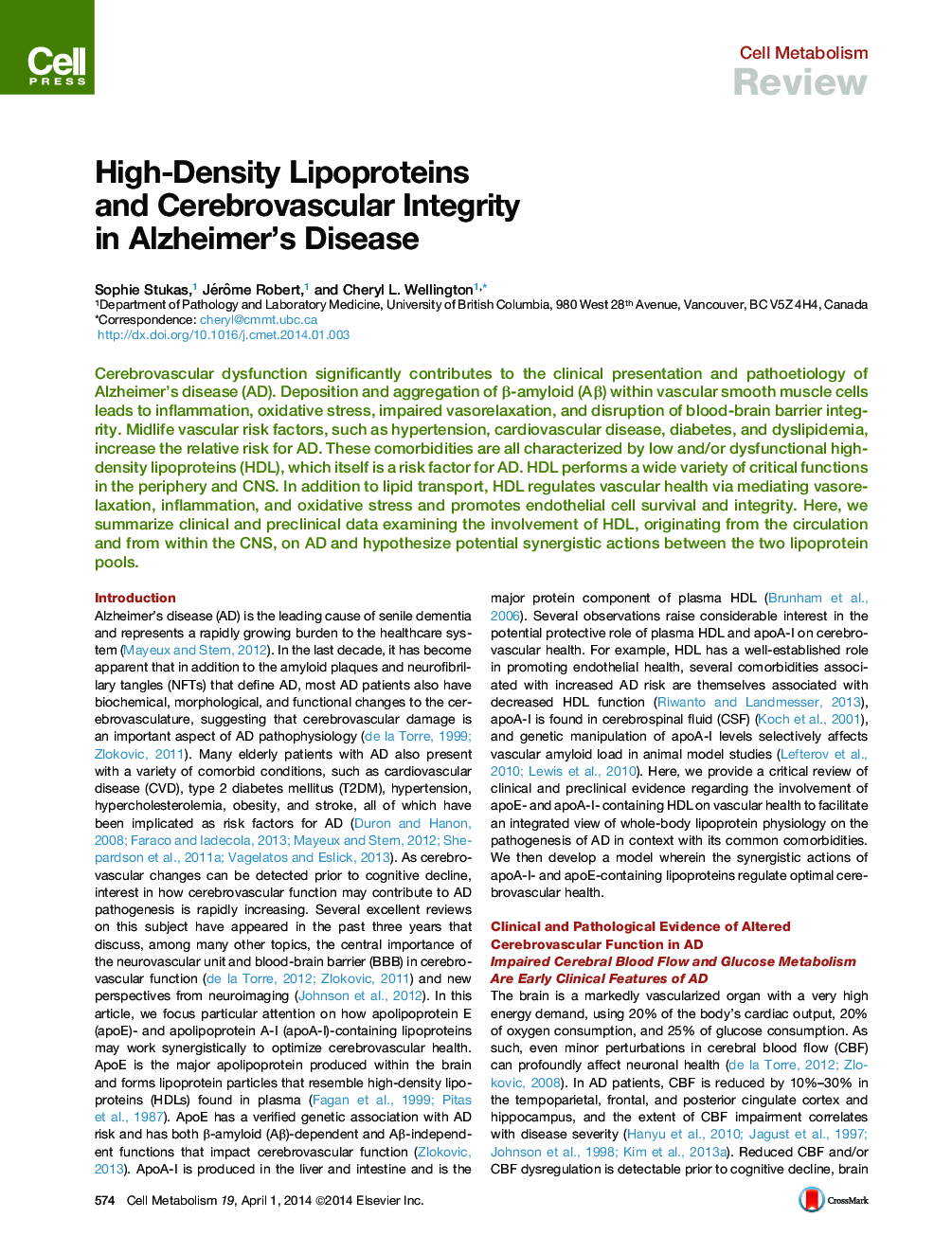| Article ID | Journal | Published Year | Pages | File Type |
|---|---|---|---|---|
| 2792661 | Cell Metabolism | 2014 | 18 Pages |
Cerebrovascular dysfunction significantly contributes to the clinical presentation and pathoetiology of Alzheimer’s disease (AD). Deposition and aggregation of β-amyloid (Aβ) within vascular smooth muscle cells leads to inflammation, oxidative stress, impaired vasorelaxation, and disruption of blood-brain barrier integrity. Midlife vascular risk factors, such as hypertension, cardiovascular disease, diabetes, and dyslipidemia, increase the relative risk for AD. These comorbidities are all characterized by low and/or dysfunctional high-density lipoproteins (HDL), which itself is a risk factor for AD. HDL performs a wide variety of critical functions in the periphery and CNS. In addition to lipid transport, HDL regulates vascular health via mediating vasorelaxation, inflammation, and oxidative stress and promotes endothelial cell survival and integrity. Here, we summarize clinical and preclinical data examining the involvement of HDL, originating from the circulation and from within the CNS, on AD and hypothesize potential synergistic actions between the two lipoprotein pools.
